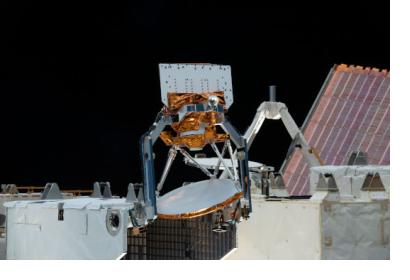NASA has developed two weather instruments known as COWVR (Compact Ocean Wind Vector Radiometer) and TEMPEST (Temporal Experiment for Storms and Tropical Systems) to test the potential of low-cost sensors in weather forecasting. The instruments have exceeded expectations and deliver useful forecast information, particularly for tropical cyclones.
COWVR measures wind speed and direction at the ocean surface, while TEMPEST provides atmospheric water vapor measurements. Both instruments, launched in late 2021 to the International Space Station, use microwave emissions to provide internal structure data of tropical cyclones, even if it is obscured by clouds. NASA created these tools with a design that prioritized simplicity, compactness, and the use of mature technology, minimizing the number of moving parts involved. COWVR is about the size of a minifridge, weighs about 60 kilograms, and requires about 47 watts to run, whereas TEMPEST is about the size of a cereal box and weighs around 4 kilograms and draws 6.5 watts of power.
The Joint Typhoon Warning Center uses the data to track the location and intensity of tropical cyclones in the Indian and Pacific oceans. The Naval Research Laboratory (NRL) has collaborated with NASA to validate and calibrate the COWVR and TEMPEST instruments for several months. The NRL has been providing the Joint Typhoon Warning Center with imagery created from data collected by these instruments.
Accurate and timely information on factors such as storm structure, location, wind speed, and humidity are critical to the Joint Typhoon Warning Center's mission of tracking tropical cyclones across the vast expanse of the ocean between Africa's east coast and the west coast of the Americas.
The next steps for COWVR and TEMPEST include evaluation by the U.S. National Hurricane Center and the Joint Typhoon Warning Center. Naval Research Laboratory also continues to assess raw data from the two instruments for use in the U.S. Navy’s global numerical weather models. The success of these smaller, low-cost sensors shows that they can play an important role in weather forecasting.
Main article image: COWVR, at center, and TEMPEST, not shown, were installed aboard the International Space Station in late 2021. © NASA

